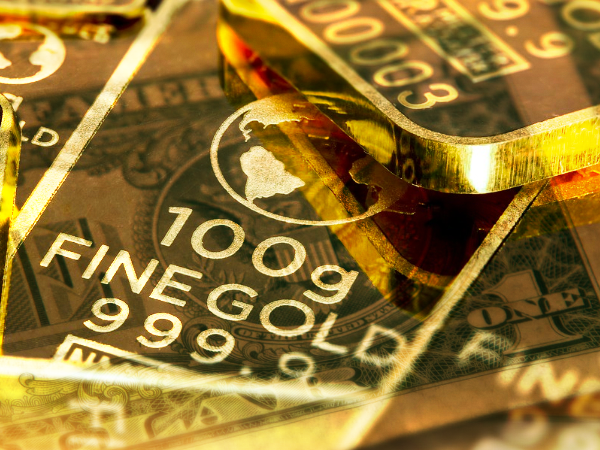A rare set of circumstances has the dollar and price of gold rising together. One analyst has a theory for why it’s happening, and where gold may go from here.

As MarketWatch’s Ivan Martchev points out, this year has seen a strange occurrence of gold rising alongside the U.S. dollar. Historically, a strong greenback has acted as one of gold’s biggest headwinds, as the metal is primarily priced in the U.S. currency.
However, this past summer, gold tested one resistance level after another, gaining as much as $300 so far this year. At the same time, the greenback continues to hover around all-time highs. To explain this phenomenon, Martchev explains how it’s important to look at the Broad Trade-Weighted Dollar Index, which takes in many more metrics than the regular DXY index.
Martchev notes that the dollar’s strength is no longer dictated solely by the Federal Reserve’s funds rate. Instead, the monetary policies of various economies across the globe have played a major role in holding the U.S. dollar up while also allowing gold to post its best performance in six years.
Negative-yielding bonds in Europe, a dismal Brexit situation and quantitative easing (QE) from the European Central Bank have all propped the dollar up. Yet these same factors are also highly beneficial for gold. The U.S.-China trade war and Beijing’s consequent devaluation of the yuan is another bullish component for the gold market, as the yuan’s depreciation pushes global central banks towards more quantitative easing. As Martchev notes, these QE programs have helped plunge various bonds into negative territory, leaving investors with less and less safe-haven options.
There is also the matter of excess fiat reserves in the global monetary system. While the ballooning of various central banks’ balance sheets, caused by central bankers purchasing their own bonds, has not yet led to an expansion of the monetary supply, gold enthusiasts remain hopeful that these money printing antics will eventually bring about hyperinflation and push gold to new highs. Although there hasn’t been a spike in inflation so far, the resulting negative-yielding bonds have proved to be enough of a booster for the gold market.
Martchev sees various venues for gold to continue its strong upwards momentum. According to him, a continuation of QE programs by the ECB and the new norm of negative-territory European bonds should lead to an additional 15%-20% gain in gold prices over the next 12 to 18 months, especially if the Federal Reserve shows an eagerness to employ QE of its own. Should a U.S. recession occur in the near-future, as many analysts and even the Fed itself have been forecasting, Martchev thinks gold will move to new all-time highs as Fed officials apply questionable policies to offset the domestic economic contraction.

Leave a Reply